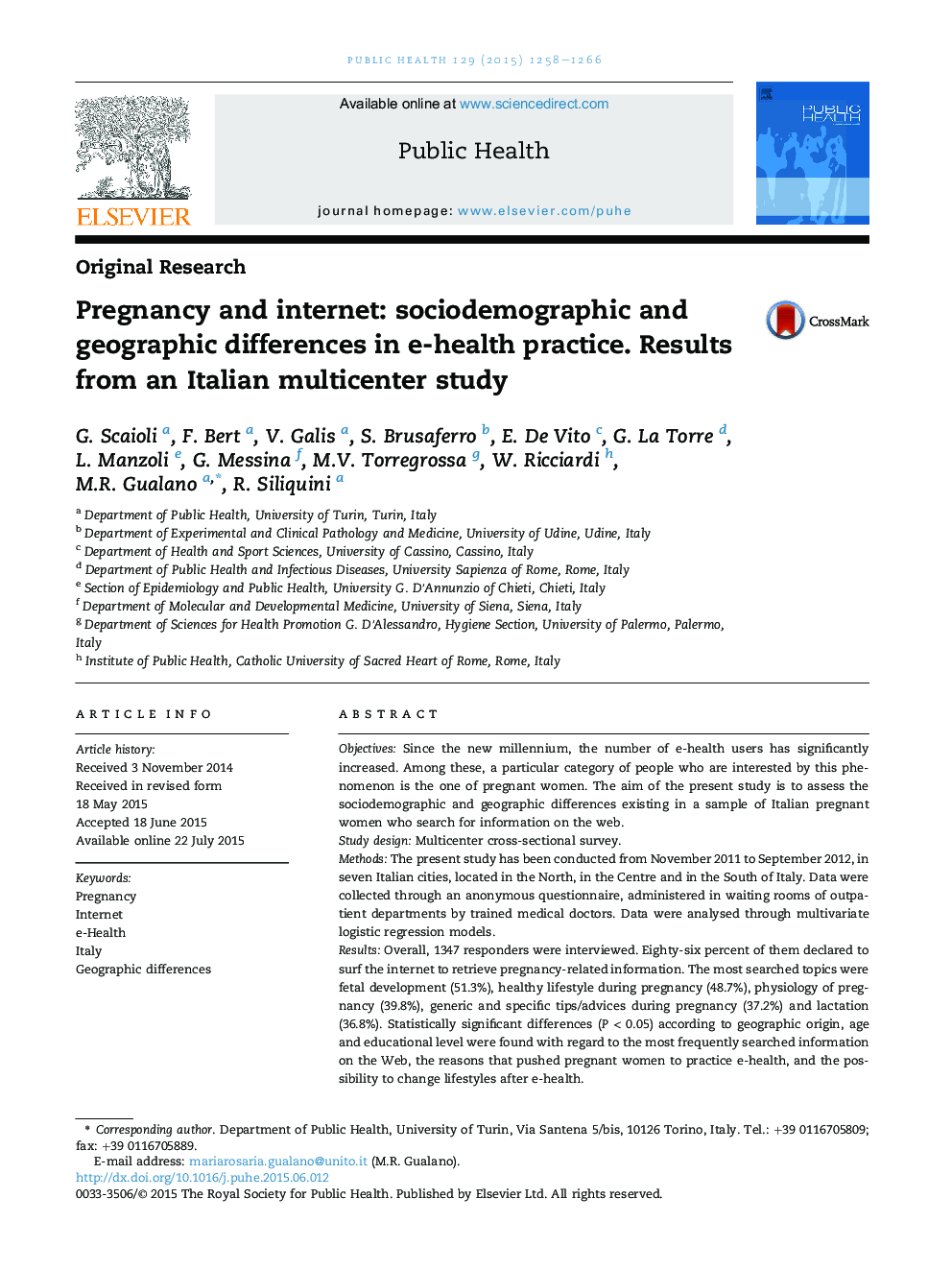| Article ID | Journal | Published Year | Pages | File Type |
|---|---|---|---|---|
| 1087380 | Public Health | 2015 | 9 Pages |
•Our study highlights a massive use of the web to retrieve information about pregnancy that should be provided by the doctors.•The most searched topics were related to fetal development, healthy lifestyle during pregnancy and physiology of pregnancy.•There are sociodemographic and geographic differences in pregnancy e-health, for instance related to the digital divide.
ObjectivesSince the new millennium, the number of e-health users has significantly increased. Among these, a particular category of people who are interested by this phenomenon is the one of pregnant women. The aim of the present study is to assess the sociodemographic and geographic differences existing in a sample of Italian pregnant women who search for information on the web.Study designMulticenter cross-sectional survey.MethodsThe present study has been conducted from November 2011 to September 2012, in seven Italian cities, located in the North, in the Centre and in the South of Italy. Data were collected through an anonymous questionnaire, administered in waiting rooms of outpatient departments by trained medical doctors. Data were analysed through multivariate logistic regression models.ResultsOverall, 1347 responders were interviewed. Eighty-six percent of them declared to surf the internet to retrieve pregnancy-related information. The most searched topics were fetal development (51.3%), healthy lifestyle during pregnancy (48.7%), physiology of pregnancy (39.8%), generic and specific tips/advices during pregnancy (37.2%) and lactation (36.8%). Statistically significant differences (P < 0.05) according to geographic origin, age and educational level were found with regard to the most frequently searched information on the Web, the reasons that pushed pregnant women to practice e-health, and the possibility to change lifestyles after e-health.ConclusionsOur findings suggest that the phenomenon of pregnancy e-health is widespread and show social and geographic differences, in particular about city of residence, age and educational level. It might encourage healthcare professionals to be more available and exhaustive during routine visits and to be more careful about web content on this topic, also addressing the different needs into different geographic contexts.
